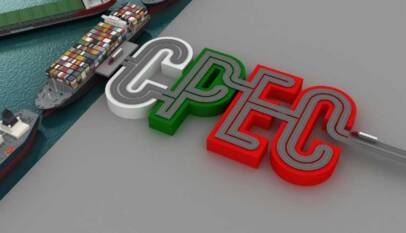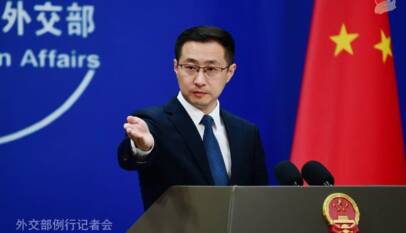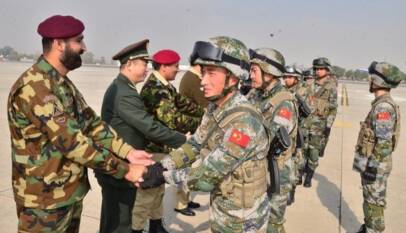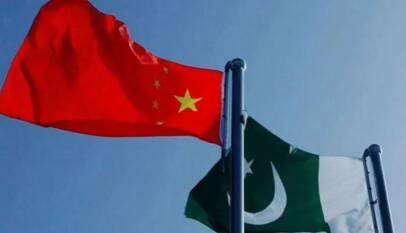Small provinces in Pakistan are major beneficiaries of CPEC
Last year, the World Bank (WB) has conducted three studies to analyze the impact of Belt and Road Initiative (BRI) and its flagship project CPEC. The studies concluded that Pakistan would be the major beneficiary of BRI and CPEC would accelerate social progress and economic development of Pakistan. It is pertinent to mention that WB noted small provinces of Pakistan would reap the maximum advantages of CPEC. After the successful execution of the first phase of CPEC, the second phase is set to stimulate socio-economic development of the whole region.
In 2019, the World Bank released three studies, including ‘Common Transport Infrastructure’, ‘A Quantitative Model and Estimates from the Belt and Road Initiative’, ‘The Belt and Road Initiative Economic, Poverty and Environmental Impacts’, and ‘The Belt and Road Initiative Economic, Opportunities and Risks of Transport Corridor’.
The studies were conducted to analyse the potential impact of the Belt and Route Initiative including the China-Pakistan Economic Corridor (CPEC). The studies produced substantial evidence which highlights the positive impact of the BRI and CPEC till 2030 (World Bank,2019).
The studies highlighted the importance of CPEC for Pakistan and its role in the development quest of Pakistan. CPEC presents multidimensional benefits for Pakistan. It has been predicted that there would be an increase of 6.43 percent in national GDP due to transport infrastructure. The increase can be enhanced to the level of 14.03 percent if the government brings reforms in other sectors including trade, investment, and ease of doing business. The reforms in investment and ease will be key to realize the dream of industrialization. The government of Pakistan is fully cognizant of the fact and is trying to introduce the required reforms.
On the welfare side, Pakistan will also be among the major beneficiaries of BRI countries. It has been stated that the total welfare gain due to CPEC would be 5.18 percent due to transport infrastructure. It can further be enhanced by introducing reforms and can reach the level of 10.51 percent. The enhanced welfare gains will contribute in reducing or eliminating poverty in Pakistan. The report highlighted that due to welfare gains almost 1.1 million people will come out of the poverty trap. Better transport infrastructure will also help Pakistan increase trade. It has forecast that Pakistan’s trade can increase by 9.8 percent if Pakistan implements reforms well in addition to transport infrastructure under CPEC. It would be a huge contribution, keeping in mind the existing situation of trade.
The employment sector is another area where Pakistan would benefit. It has been estimated that CPEC-related infrastructure projects will create four million jobs directly. The indirect count of jobs would be even larger. The implementation of SEZs will also revolutionize the job sector and create new opportunities for entrepreneurship, which can be the key sector to accommodate the youth bulge.
These projections by the World Bank can be qualified by the prevailing facts and contribution of the first phase of CPEC. Pakistan has already witnessed tremendous benefits from CPEC-related interventions. Latest figures tell us that CPEC created 75,000 jobs for Pakistanis (China Embassy 2019). That means that 75,000 families had the opportunity to combat poverty. CPEC also helped Pakistan manage electricity loadshedding.
Pakistan was suffering and no one was ready to invest in the energy sector. Vision 2025 pointed out that electricity loadshedding was undermining GDP growth rate by a factor of 2 percent. In monetary terms, it was imposing a loss of $4-5 billion annually. CPEC-related investment in the energy sector helped control this loss to a large extent. It is also contributing to tackle issues of aging plants and infrastructure related to electricity.
Transport infrastructure is another sector which contributed to overcome problems of connectivity. Infrastructure plays a key role in setting the direction of industrial development and trade enhancement. Pakistan was in dire need to rehabilitate and construct new infrastructure. Bad transport infrastructure caused a loss of 4-6 percent to GDP (Vision 2025, Pakistan). Small and Medium Enterprises (CPEC Official Website) also benefited from the investments of CPEC. SMEs inclusion is a positive sign, as SMEs in all economies play a leading role in the creation of jobs and spread of economic benefits.
CPEC also contributed to an increase in the GDP growth of Pakistan. It has been estimated that the contribution of CPEC to GDP was almost 2 percent. Owing to CPEC, Pakistan touched 5.8 percent GDP growth rate in 2018 (Pakistan Economic Survey, 2018-19). It has also helped Pakistan sustain external shocks.
However, the most interesting part of all the benefits is that the small provinces will get maximum benefit. The World Bank reports highlighted that the major beneficiaries in Pakistan would be Quetta and Peshawar, followed by Lahore and Karachi. That is good news for Pakistan, which is already striving to develop Balochistan.
Most recently, the government of Pakistan started a new program for the development of Balochistan. A few days back, the government and Pakistan and the CPEC Authority too deliberated on a development package for Balochistan.
The Gwadar Port has already been operationalized and has started to deliver benefits to the people of Balochistan. The port has introduced multidimensional benefits for the province and will turn Gwadar city into a hub for regional connectivity. Transit trade through Gwadar will bring new opportunities for livelihoods for local people and province. It will also help enhance trade with Afghanistan, especially from the Balochistan border.
Besides, Chinese companies are also contributing to local development. For example, COPHC, the executing agency for the Gwadar Port has created more than 4000 jobs during the last five years in Balochistan. COPHC is also contributing in the education sector. It has built a school in one of the most backward areas of the country.
Free Economic Zones in Gwadar is another big initiative. It is in the advanced stages of development and many companies have registered their business in Gwadar. The government of Pakistan has offered a comprehensive and lucrative package for industrial development in Gwadar and companies are investing to benefit from it.
Eco-tourism is another area in which Pakistan is investing in the coastal areas of Balochistan. Pakistan and China are also working to help the local fishing community modernize their way of fishing. Both governments have planned to enhance the fish trade from Balochistan. Now, under the Balochistan development initiative, the government will be offering development packages to other parts of the province.
These initiatives indicate that Pakistan is fully focused on the development of all provinces, especially the smaller provinces. However, we need to understand that the development process takes a long time to bear fruit. We need to be patient to evaluate the development process and wait for the full execution of all interventions. The early signs of development dividends are visible and the second phase of CPEC will help spread it on a wider scale.
Chinese Ambassador highlights significance of Third Plenary Session for China-Pakistan cooperation
The Third Plenary Session of the 20th Central Committee of the Communist Party of China ha…












